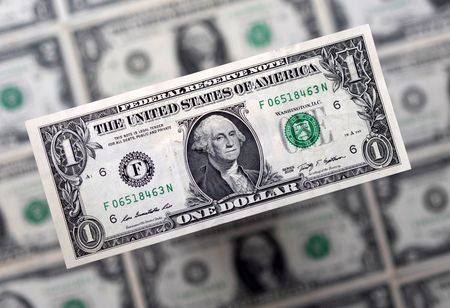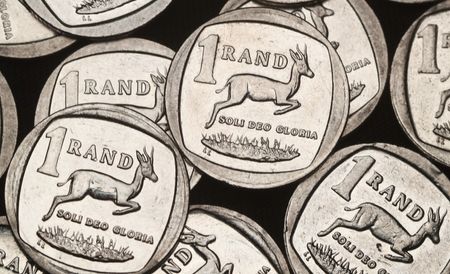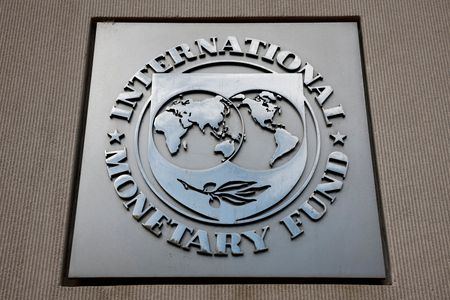By Chuck Mikolajczak
NEW YORK (Reuters) -The U.S. dollar fell on Wednesday, adding to a drop in the prior session after weaker-than-expected U.S. consumer inflation data as investors await signs that global trade battles will continue to ease.
The dollar index began the week with a jump of more than 1% on Monday and hit a one-month high as the United States and China reached a deal to temporarily cut reciprocal tariffs and tamped down concerns that a trade war between the world’s two biggest economies could lead to a global recession.
But the greenback fell on Tuesday after a gauge of consumer prices was below economists’ expectations as declining food costs partially offset rising rents.
“What we’ve seen over the past, well, ever since the Fed stopped lowering rates, has been a great sensitivity in the markets, especially the currency markets, to inflation data,” said Joseph Trevisani, senior analyst at FX Street in New York.
“We’re moving from concern about the inflation rate in the U.S., which continues to move in the right direction, and perhaps reviving growth.”
The dollar index, which measures the greenback against a basket of currencies, fell 0.25% to 100.73, with the euro up 0.25% at $1.1212.
In light of the easing trade tensions, markets have dialed back expectations for rate cuts from the U.S. Federal Reserve this year, pricing in a 74% chance for the first cut of at least 25 basis points (bps) at the central bank’s September meeting, according to LSEG data, compared with the prior view for a cut in July.
Several major brokerages, including Goldman Sachs, JPMorgan and Barclays, have recently scaled back their U.S. recession forecasts and their view of Fed policy easing.
Chicago Fed President Austan Goolsbee said data showing temperate consumer inflation in April does not necessarily reflect the impact of rising U.S. import tariffs, and the Fed still needs more data to determine the direction of prices and the economy.
Fed Vice Chair Philip Jefferson noted a similar sentiment, saying the recent inflation data indicated good progress towards the central bank’s 2% goal, but the outlook is now uncertain due to the possibility that new import taxes will drive prices higher.
Against the Japanese yen, the dollar weakened 0.89% to 146.16 while sterling eased 0.1% to $1.3291.
Investors were also digesting news South Korea’s Deputy Finance Minister Choi Ji-young met with Robert Kaproth of the U.S. Treasury on May 5 to discuss forex markets, which helped send the dollar to its lowest in a week against Korea’s won.
The won strengthened 1.53% against the dollar to 1,394.64.
Goldman Sachs analysts said in a note to clients that while details of the meeting are scarce and talks may be part of an ongoing dialogue, “it puts renewed focus on the scope for undervalued trade surplus currencies to appreciate in a weaker dollar environment.”
Markets will closely watch Thursday’s U.S. data on the labor market, another inflation gauge and a reading of consumer health, as well as comments from Fed Chair Powell.
(Reporting by Chuck Mikolajczak, additional reporting by Kevin Buckland and Linda Pasquini; Editing by Kirsten Donovan)







